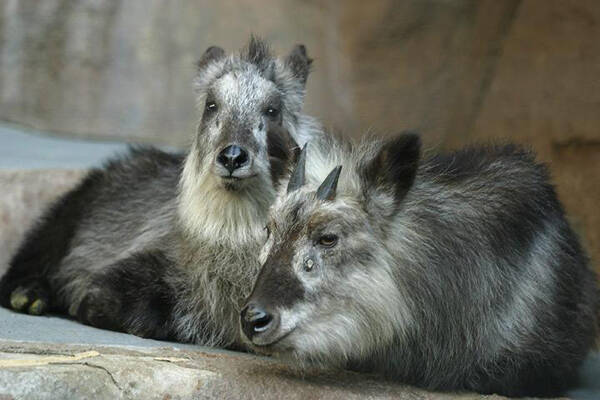Capricornis crispus
IUCN
LCBasic Information
Scientific classification
- name:Capricornis crispus
- Scientific Name:Capricornis crispus,Japanese Serow
- Outline:Ungulata
- Family:Artiodactyla Bovidae Serow
Vital signs
- length:80-180cm
- Weight:25-140kg
- lifetime:20-22years
Feature
One of Japan's official national treasures
Distribution and Habitat
It is only found in Honshu, Kyushu and Shikoku islands of Japan.
Appearance
The Japanese serow is similar in appearance to a goat. The body length is 80-180 cm. The height at the shoulder is 50-94 cm. The tail length is 6-16 cm. The average length of the horns is 12-16 cm. The weight is 25-140 kg, with little difference in weight between the sexes. Their fur is dark brown, but in the northern part of their range, the color is lighter. The Japanese serow secretes a vinegar-like substance from the glands in their eyes, which they use as a territorial mark.
Details
Japanese Serow (scientific name: Capricornis crispus) is also known as Japanese Serow, and has no subspecies. As one of Japan's official national treasures, the Japanese Serow has caused trouble for taxonomists due to its unique characteristics. All species of the genus Serow were once grouped together under the species name Capricornis sumatrensis, giving each species only subspecies status. Even now, uncertainty remains about the Formosan Serow (Capricornisswinhoei), with some taxonomists listing it as a subspecies of the Japanese Serow.

Japanese serows live in forests in mountainous areas. They are solitary, males always move alone, and females and their cubs only form small groups of 4-5 at most, and never in larger groups. When disturbed, the Japanese serow can run quickly, jump over dangerous rocks, and climb up cliffs to avoid enemies; when forced to escape, it will use its two hind hooves to support its body, stand upright, and use its two front hooves to desperately knock on rocks or its belly, making a crisp "dong dong" sound that resounds through the silent valley to intimidate the enemy.
The Japanese serow mainly feeds on buds and leaves of deciduous broad-leaved trees. They also feed on leaves and fallen acorns of evergreen conifers, and sometimes eat flowers and fruits.
The Japanese serow usually forms a monogamous system. However, some males mate with two females in the same breeding season, and occasionally with three females. Two field studies conducted at different locations found similar proportions of polygynous males (20-30%), suggesting that the rate of polygynous mating may be fixed in this species. Territories formed by both sexes can defend against other Japanese serows of the same sex. Usually, male territories almost completely overlap with female territories, but sometimes male territories include more than one female's territory. In these cases, those males are polygynous. Mating pairs remain together from year to year, probably because they have consistent territories. When males leave their territories, females stay in the same territory and mate with the male who takes over the territory.

The breeding season of the Japanese serow is from September to November. The cubs are born in May and June and live with their mothers for about a year. The cubs reach sexual maturity at 2.5-3 years old. Although the cubs become independent at one year old, they remain in the place of birth. They disperse between 2-4 years old, but females can inherit their mothers' territories.
The maximum lifespan of male Japanese serows is 20-21 years, and female Japanese serows is 21-22 years. Life expectancy at birth is 5.3-5.5 years for males and 4.8-5.1 years for females. One study found that Japanese serows lived in the same area for 11.7-12.4 years. Since Japanese serows disperse from their birthplaces at the age of 2-4 to establish their own territories, they spend most of their lives in the territories they have established. In addition, the successful establishment of a territory is likely to greatly increase the survival chances of Japanese serows, and Japanese serows without a territory have a greater risk of death.
The meat of Japanese serows can be eaten, and the skin is used to make leather goods.
Listed in the "Red List of Threatened Species of the World Conservation Union" (IUCN 2008 ver 3.1) - Least Concern (LC).
Protect wild animals and eliminate game.
Maintaining ecological balance is everyone's responsibility!








